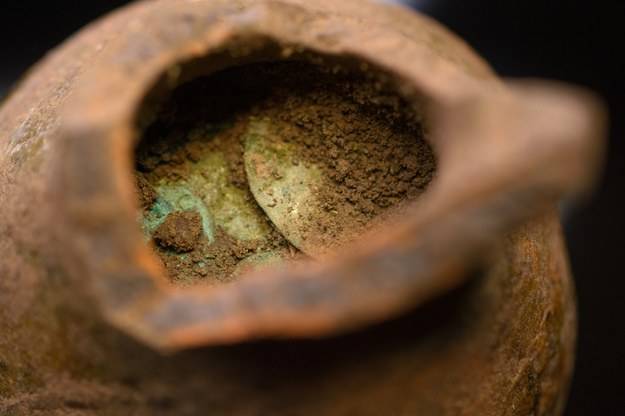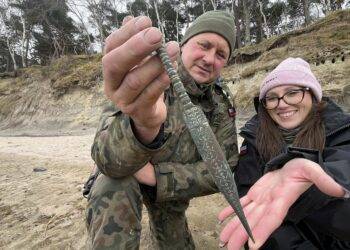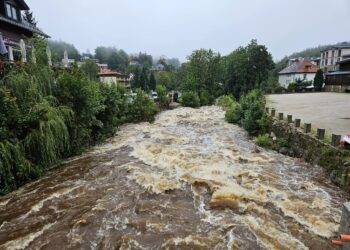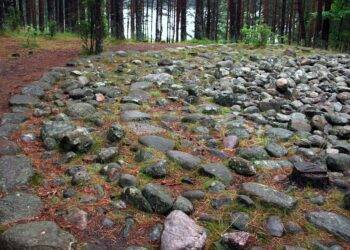Two amateur treasure hunters made a remarkable discovery in a forest near Bochnia in southern Poland — a ceramic vessel filled to the brim with over 600-year-old silver coins, believed to have been hidden during the reign of Polish King Casimir IV Jagiellon.
The find, announced Monday by local authorities and reported by Polish media, is considered one of the most significant numismatic discoveries in recent years in the region of Małopolska (Lesser Poland).
The discovery was made by brothers Wojciech and Marek Budzyn, members of the local treasure hunting association Bocheńskie Stowarzyszenie Poszukiwaczy Stater (Bochnia Treasure Hunters Association Stater). Their search was legal and conducted with permission from the State Forests authority and the Provincial Monument Conservator.
“We were looking for traces of a medieval trade route that led from the nearby hills toward Bochnia,” Wojciech Budzyn told RMF FM radio. “The first signal from our metal detector was very weak — almost unnoticeable — but when we checked again with another device, we realized there might be something worth digging for.”
Coins Linked to King Casimir IV
Buried roughly 30 centimeters (about 12 inches) beneath the forest floor, the brothers unearthed a clay pot packed with hundreds of silver coins — identified as denarii from the reign of Casimir IV Jagiellon, King of Poland from 1447 to 1492.
Casimir IV was the son of Władysław Jagiełło, the Grand Duke of Lithuania and King of Poland who famously defeated the Teutonic Knights at the Battle of Grunwald in 1410. During Casimir IV’s reign, Poland experienced territorial expansion and economic growth, making the coins a valuable testament to the country’s medieval history.
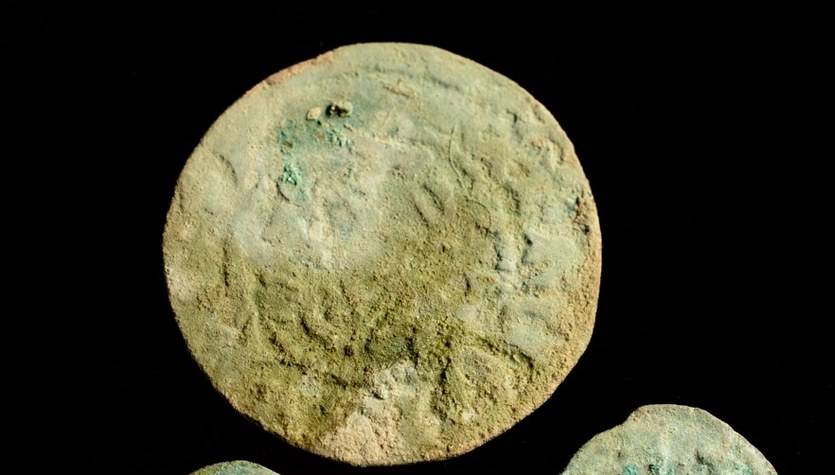
Experts believe the treasure may have been hidden during a period of unrest or conflict in the late 15th century.
Perfectly Preserved in the Soil
According to the treasure hunters, the coins fell out of the pot as they carefully removed it from the ground. The vessel itself was almost completely intact, a rare occurrence in archaeological finds of this kind.
Photos provided by the finders show the silver coins tightly packed inside the clay vessel, some still gleaming despite centuries spent underground. Experts from the Provincial Monument Conservator’s office are now cataloging and analyzing the coins to determine their exact origin, mint, and historical context.
Archaeologists say the coins’ good state of preservation was likely due to the clay pot’s protective properties and the relatively undisturbed soil conditions in the forest.
Significance of the Find
“This is a discovery of great historical and cultural importance,” said Dr. Marek Florek, an archaeologist specializing in medieval Poland. “Coin hoards like this offer valuable insights into the economy, trade, and political landscape of the time.”
Florek added that it was not uncommon for people in medieval Poland to bury their wealth during times of war, invasion, or social upheaval, hoping to return for it later — a hope that often went unfulfilled.
Authorities did not disclose the exact location of the discovery to protect the site from looters and illegal treasure hunters.
Legal Treasure Hunting and Cooperation with Authorities
The Budzyn brothers emphasized that their activities were conducted according to Polish law, with full cooperation from relevant authorities. In Poland, all significant archaeological finds must be reported to the conservator’s office, and discovered artifacts become state property.
The brothers belong to a growing community of licensed treasure hunters in Poland who work with archaeologists to uncover the country’s rich and often hidden history.
“It’s about passion, respect for history, and preserving our heritage,” said Marek Budzyn. “We are happy that the coins will be studied and displayed for everyone to see.”
What Happens Next?
The coins are now in the care of conservation specialists who will clean, document, and analyze them. Eventually, the hoard is expected to be exhibited at a regional museum, likely in Bochnia or Krakow, allowing the public to view one of the most fascinating finds from Poland’s medieval past.
Meanwhile, the treasure hunters hope their discovery will inspire others to take an interest in local history and the responsible exploration of cultural heritage.
“We never expected to find something like this,” said Wojciech Budzyn. “It’s a dream come true for any treasure hunter — but above all, it’s a part of Poland’s story that we are proud to have helped uncover.”

